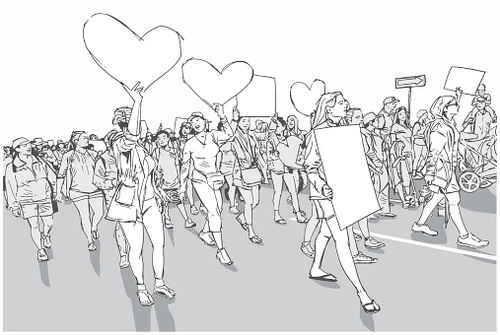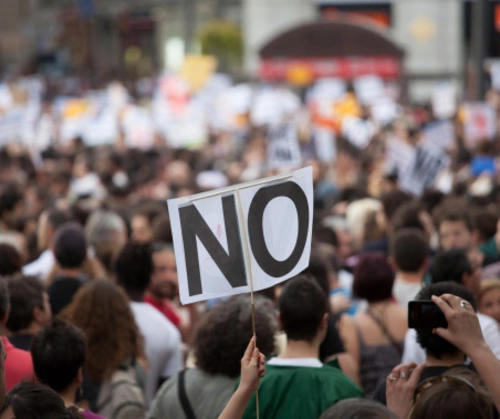1. Select a discrete app icon.

notes
History and Purpose of Domestic Violence Coalitions
Expert Weighs in on Florida Investigation, Importance of Coalitions
- Mar 10, 2020

There has been some troubling news recently reported by the Miami Herald about the Florida Coalition Against Domestic Violence and decisions made by its leadership that will most likely impact the entire state, and possibly the country. It may be helpful to understand the history of coalition work and what the beginning purpose was for these organizations.
In 1978, a U.S. Commission on Civil Rights hearing was held in Washington, D.C. The goal of that hearing was to educate Congress about an emerging issue impacting the country identified then as “battered wives.” Very few domestic violence programs existed at that point in the U.S., and only one or two states had created a coalition to address it. Merriam Webster defines “coalition” relevant to this article in this way: a temporary alliance of distinct parties, persons or states for joint action. When advocates began this work we had no real data to understand it, and felt that creating a coalition of people who cared about it and wanted to reduce the violence in our communities was our best strategy.
After that hearing in 1978, the 200 or so advocates from across the country left the meeting with two goals in mind. First to create statewide organizations that could begin to build a network to share information and expand services in local communities that wanted to provide direct services for victims. In 1978 there began a surge of resources for victims of domestic violence in the U.S., including the National Coalition Against Domestic Violence, many state coalitions and local shelters and programs in communities that had previously not been served.
The state coalition was tasked with gathering information about existing services, assisting communities that were seeking ways to start non-profits to provide services, identifying allied agencies and organizations that would be good partners and then tasking those people with improving and enhancing services and outcomes for those in danger. In the first decade, few state coalitions had funding, so they charged a membership fee to allow the coalition to have the resources needed to build and expand the network of services.
This structure allowed the U.S. to expand services at a speed that may not have been possible otherwise, from a few hundred local shelters and programs in 1978 to over 2,000 in the first 10 years, and at least one state coalition in every state. Some states created more than one coalition; for instance, California originally had three coalitions—a northern, central and southern coalition. As time went on, most states consolidated to one coalition and that structure remains today.
As federal funding became available for coalition work in the 1990s, in addition to being available to shelters and programs, the capacity and effectiveness of state coalitions grew. They were able to obtain more consistent funding, and most applied those funds to increase the knowledge of local advocates doing crisis work and support for services provided across the state.
Around this time, some discussions were held in coalition meetings to explore the idea of the state coalition becoming the grant administrator for federal and state funds provided for local services. The government agencies at the federal level passed the state money to state agencies that developed the criteria and oversight of funds sent from federal sources. Florida became one of those states that received all the federal and state domestic violence funds through the state domestic violence coalition.
Donate and change a life
Your support gives hope and help to victims of domestic violence every day.
As a result, Florida’s state coalition became a significant funder for local programs, created the criteria for certification, determined which ones were able to receive funds and then controlled the process by which those funds were disseminated. This process by itself isn’t bad but as we now see in Florida, it allows for a system to go out of control.
Oversight of how public funds are spent is the most important role of a board of directors. Providing due diligence of how a director or CEO of an organization allocates those financial resources should be consistent and regular. Outside and truly independent auditors should review the financial records annually with a report to the board. If the people responsible for oversight are also the beneficiaries of the funds distributed, that provides a leader a rare and powerful opportunity to do things that are not in the best interest of the programs, advocates and survivors seeking services.
I believe in fair pay for domestic violence advocates and employees—this is very hard work and is often done with few rewards or recognition of how much is done behind the scenes to keep our communities safer. I also believe that public interest work isn’t the way to build up huge nest eggs, that if one wants to make a very large income, you don’t seek out employment in a non-profit.
Information continues to emerge about the Florida coalition, and investigations are ongoing. We should pay attention, learn what we can from this tragedy and put into place a structure that protects everyone from future behavior. Survivors, advocates, programs and employees deserve our best thinking and efforts to end violence in our communities. We have some work to do to win back the public trust, but I have never met more resilient and committed people than most of those working in this field. I have great faith we can correct this together.
Editor's Note: This article is part of #YourVoice, an ongoing column published on this website by individual contributors in their own personal capacity and that involves the opinions, recollections and/or information provided by such contributors, and which does not necessarily reflect the official policy or position of this website. Rita Smith is a nationally recognized expert in domestic violence who has been interviewed by hundreds of newspaper reporters, appeared on many local and national radio and television news shows, including the Washington Post, USA Today, People Magazine, NPR, The Today Show, Good Morning America and Oprah Winfrey Show. She began her career in 1981 as a shelter crisis line advocate and ascended to lead the National Coalition Against Domestic Violence (NCADV) from 1992-2014 where she established the original relationship between DomesticShelters.org and NCADV. Rita doubles as a consultant to the non-profit 501(c)3 Theresa’s Fund Inc., which operates DomesticShelters.org. Smith currently serves as a senior advisor to the National Football League on policy and training issues related to domestic violence and sexual assault.
Looking for someone to speak with? Enter your location to find phone numbers for domestic violence experts in your area.
Have a question about domestic violence? Type your question below to find answers.








